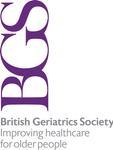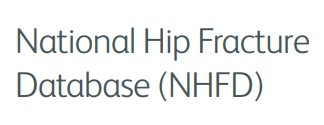BOASt - The Care of the Older or Frail Orthopaedic Trauma Patient




Date Published: May 2019
Last Updated: May 2019
Background
The care of orthopaedic trauma in the older or frail patient is dependent on coordinated multidisciplinary working to manage the physical injury, co-morbidities and rehabilitation, including measures to prevent further injury. Previously, patients with a hip fracture have been the focus of such collaboration but the need extends to patients sustaining other injuries. The frail patient with severe injuries is at risk of undertriage, delayed diagnosis and consequent sub-optimal care. The Trauma Audit Research Network (TARN) Elderly Trauma report1 showed in that, in this group, it is not high energy mechanisms but falls from a standing height that predominate.
Inclusion:
All patients admitted having sustained a fragility fracture and patients sustaining major trauma who have a Clinical Frailty Scale (CFS) of 5 or more.
Standards for Practice
- All patients should be managed in a frailty pathway which includes Comprehensive Geriatric Assessment (CGA)2 commencing within 72 hours of injury. The pathway should demonstrate collaboration between pre-hospital services, Emergency Departments, Orthopaedic, Anaesthetic and Orthogeriatric clinicians. A written policy should define how the teams cooperate to manage ward-based patients in the peri-operative period (from admission to 24 hours post-op), including at weekends and on bank holidays.
- Networks should have pathways to guide which patients should be discussed and transferred to a Major Trauma Centre (MTC) within 24 hours of admission. These pathways should include MDT review of all patients with ISS>15 who are not transferred. Network clinicians should be able to review imaging and utilise teleconferencing when appropriate.
- When indicated, cross-sectional imaging should be obtained at initial presentation in the emergency department. Instances of later cross-sectional imaging should be the subject of an on-going audit. Imaging of the head should also include the cervical spine. When an unstable spinal injury is identified or cannot be excluded, the method of cervical spine protection must be clearly communicated and recorded.
- Ceilings of treatment, including transfer, escalation and the appropriateness of cardiopulmonary resuscitation (CPR), should be discussed jointly by the treating teams. This should be documented and include the patient and those close to them, considering advanced directives, lasting powers of attorney and safeguarding issues. These decisions should be made at consultant level and prior to any surgery.
- Protocols for the reversal of anticoagulation must be available and all patients should be assessed and treated for their risk of venous thromboembolism. Each hospital should have a guideline that is consistent across the Trauma Network.
- Patients with a serious head injury (GCS 8 or less) should be considered for transfer to a neuroscience unit.
- There must be a pathway for the management of chest wall trauma that includes early access to regional analgesia. There must be network guidelines for the selection and transfer of patients who may benefit from early surgery to stabilise the chest wall. These transfers must take place within 48 hours of the decision for surgical management.
- Pain management must be through a defined strategy utilising patient-specific tools and incorporating peripheral nerve blockade when appropriate. Each hospital should have a specific pain guideline for this population with an emphasis on limitation of opioids, guidance in renal impairment and avoidance of non-steroidal medications.
- All patients should have a multifactorial falls risk assessment and should be referred to falls prevention services if indicated.
- All patients should have a bone health review, be investigated and prescribed appropriate medication when indicated.
- All patients should have a nutritional assessment. No patients should be made nil by mouth unless immediate surgery is planned. Drinking fluids in the preoperative period should be encouraged, in line with local policies.
- Units should routinely be using a validated delirium assessment tool (such as the 4AT) and have a delirium policy which describes preventative measures, ensures rapid identification of potentially reversible causes and delivers individualised interventions in line with NICE CG103.
- Patients should not be nursed flat unless it is documented that this is essential. Early sitting up / bed tilt to decrease risks of recumbency should be encouraged.
- All surgery in the frail patient should be performed to allow full weight-bearing for activities required for daily living and within 36 hours of admission, in line with current hip fracture care. Patients should be seen by a physiotherapist on postoperative day one with early identification of functional rehabilitation goals as detailed in the rehabilitation BOAST.
- All patients with complex peri-articular or peri-prosthetic fractures should be discussed with specialist fracture surgeons within robust network pathways.
- All patients must be entered into a discharge-planning pathway with a rehabilitation prescription and clear coordination between inpatient and outpatient therapists. All patients should receive information regarding expected functional recovery and rehabilitation, including advice about return to normal activities such as work and driving.
- Each hospital should submit data to national databases (NHFD, FLS-DB and TARN) to monitor its performance against national benchmarks and quality standards.
1 www.tarn.ac.uk/content/downloads/3793/Major%20Trauma%20in%20Older%20People%202017.pdf.
2 A comprehensive geriatric assessment is an inter-disciplinary diagnostic process to determine the medical, psycholgical and functional capbility of someone who is frail and old. The aim is to develop a coordinated, integrated plan for retirement and long-term support. www.nice.org.uk/guidance/qs136/chapter/quality-statement-2-comprehensive-geriatric-assessment.
